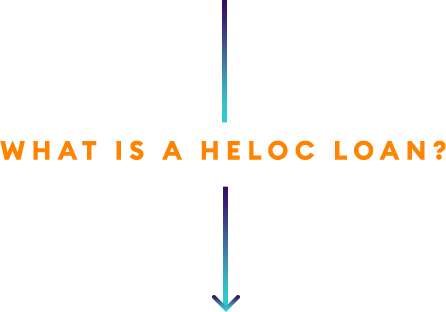

They can borrow and repay funds multiple times during what’s known as the draw period, typically ranging from 2 to 10 years. During this time, borrowers may only need to make interest payments on the amount borrowed. After the draw period ends, the loan typically enters a repayment period, during which both principal and interest payments are required. HELOCs typically have variable interest rates, which means that the rate can fluctuate over time based on market conditions.

-
 HELOC Loan
HELOC Loan
Requirements -
 How Do HELOC
How Do HELOC
Loans Work? -
 HELOC Loan
HELOC Loan
Benefits
HELOC Loan Requirements:
- Proof of income
- Credit score 680 or higher
- DTI up to 50% is allowed
- Acceptable equity in the home determined by automated valuation or an appraisal
- Up to $350,000 loan amount
How do HELOC Loans Work?
A Home Equity Line of Credit (HELOC) works similarly to a credit card but is secured by the equity in your home. Here’s how it works:
1. Application and Equity:
You apply for a HELOC with one of our Licensed Loan Officers – during this initial call we can order an AVM (Automated Valuation Method) to see how much equity you have in your home. In many cases you will not even need an actual appraisal!
2. Credit Limit & Approval:
Our Underwriters will review you application including your income documents and value and determine a maximum credit limit, which is the maximum amount of money you can borrow using the HELOC. This limit is typically based on a percentage of your home’s appraised value minus any outstanding mortgage balance.
3. Draw Period:
After approval and signing loan documents we will fund your loan and you enter the draw period, during which you can access funds from the HELOC as needed, up to your credit limit. Initially, we will give you the entire full draw amount up front. From here you use what you need and pay back whatever funds you do not need right away. The draw period is typically 2 to 10 years depending on which program you chose. During this time, you can borrow and repay funds multiple times, similar to how you might use a credit card.
4. Repayment:
During the draw period, you typically only need to make interest payments on the amount you’ve borrowed. These payments can vary based on the outstanding balance and the current interest rate. However, you can also make additional payments to reduce the principal balance if you choose.
5. Repayment Period:
After the draw period ends, the HELOC enters the repayment period, which is usually 10 to 20 years. During this time, you can no longer borrow funds from the HELOC, and you must begin repaying both the principal and interest on the outstanding balance.
6. Interest Rates:
HELOCs have variable interest rates, which means that the rate can fluctuate over time based on changes in the market.
HELOC loan approvals from the 1st conversation you have with a Licensed Loan Officer to accessing your funds can be as quick as 14 days.
HELOC Loan Benefits:
A Home Equity Line of Credit (HELOC) offers several benefits to homeowners:
Flexibility:
HELOCs provide homeowners with a flexible source of funding. Borrowers can access funds as needed, up to their approved credit limit, during the draw period. This flexibility makes HELOCs ideal for covering various expenses, such as home improvements, education costs, debt payments, or unexpected emergencies.
Lower interest rates:
HELOCs often come with lower interest rates compared to other forms of borrowing, such as credit cards or personal loans. Since HELOCs are secured by the equity in the home, we can offer lower interest rates, resulting in potential savings for borrowers.
Potential tax advantages:
In many cases, the interest paid on a HELOC may be tax-deductible if the funds are used for home improvements. Homeowners should consult with a tax advisor to understand their specific tax situation and potential benefits.
Access to large sums of money:
Depending on the equity in the home, HELOCs can provide access to significant sums of money. This can be particularly useful for major expenses or investments.
Revolving credit:
HELOCs operate as revolving lines of credit, similar to credit cards. Borrowers can borrow, repay, and borrow again during the draw period without needing to reapply for a new loan each time.
Peace of mind:
Having a HELOC in place can provide homeowners with peace of mind knowing that they have a financial safety net available for unexpected expenses or opportunities that may arise.
Overall, a HELOC can be a valuable financial tool for homeowners looking to leverage the equity in their homes for various purposes while enjoying flexibility, lower interest rates compared to other types of debt, and potential tax benefits.
